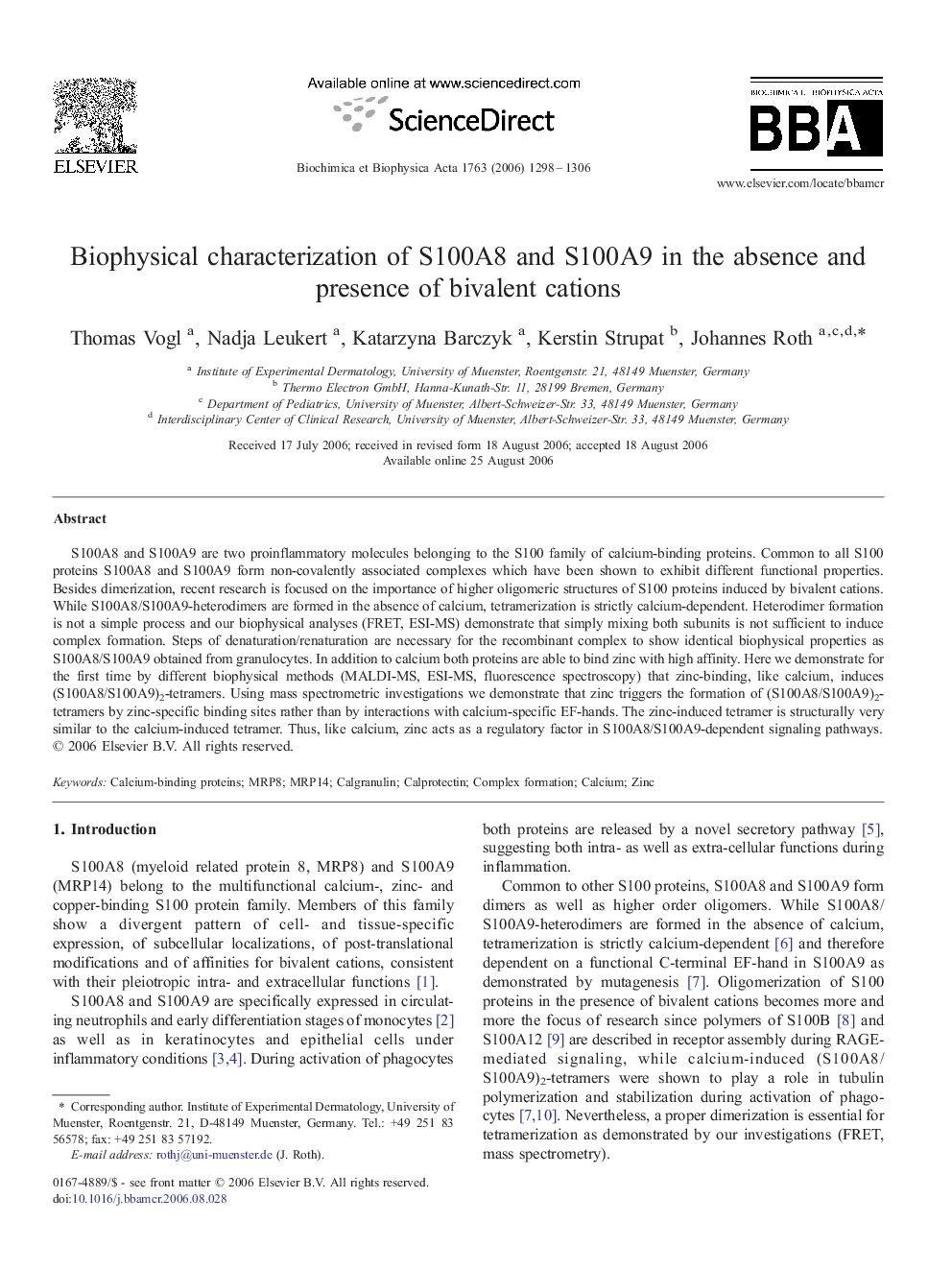| Article ID | Journal | Published Year | Pages | File Type |
|---|---|---|---|---|
| 1951652 | Biochimica et Biophysica Acta (BBA) - Molecular Cell Research | 2006 | 9 Pages |
S100A8 and S100A9 are two proinflammatory molecules belonging to the S100 family of calcium-binding proteins. Common to all S100 proteins S100A8 and S100A9 form non-covalently associated complexes which have been shown to exhibit different functional properties. Besides dimerization, recent research is focused on the importance of higher oligomeric structures of S100 proteins induced by bivalent cations. While S100A8/S100A9-heterodimers are formed in the absence of calcium, tetramerization is strictly calcium-dependent. Heterodimer formation is not a simple process and our biophysical analyses (FRET, ESI-MS) demonstrate that simply mixing both subunits is not sufficient to induce complex formation. Steps of denaturation/renaturation are necessary for the recombinant complex to show identical biophysical properties as S100A8/S100A9 obtained from granulocytes. In addition to calcium both proteins are able to bind zinc with high affinity. Here we demonstrate for the first time by different biophysical methods (MALDI-MS, ESI-MS, fluorescence spectroscopy) that zinc-binding, like calcium, induces (S100A8/S100A9)2-tetramers. Using mass spectrometric investigations we demonstrate that zinc triggers the formation of (S100A8/S100A9)2-tetramers by zinc-specific binding sites rather than by interactions with calcium-specific EF-hands. The zinc-induced tetramer is structurally very similar to the calcium-induced tetramer. Thus, like calcium, zinc acts as a regulatory factor in S100A8/S100A9-dependent signaling pathways.
